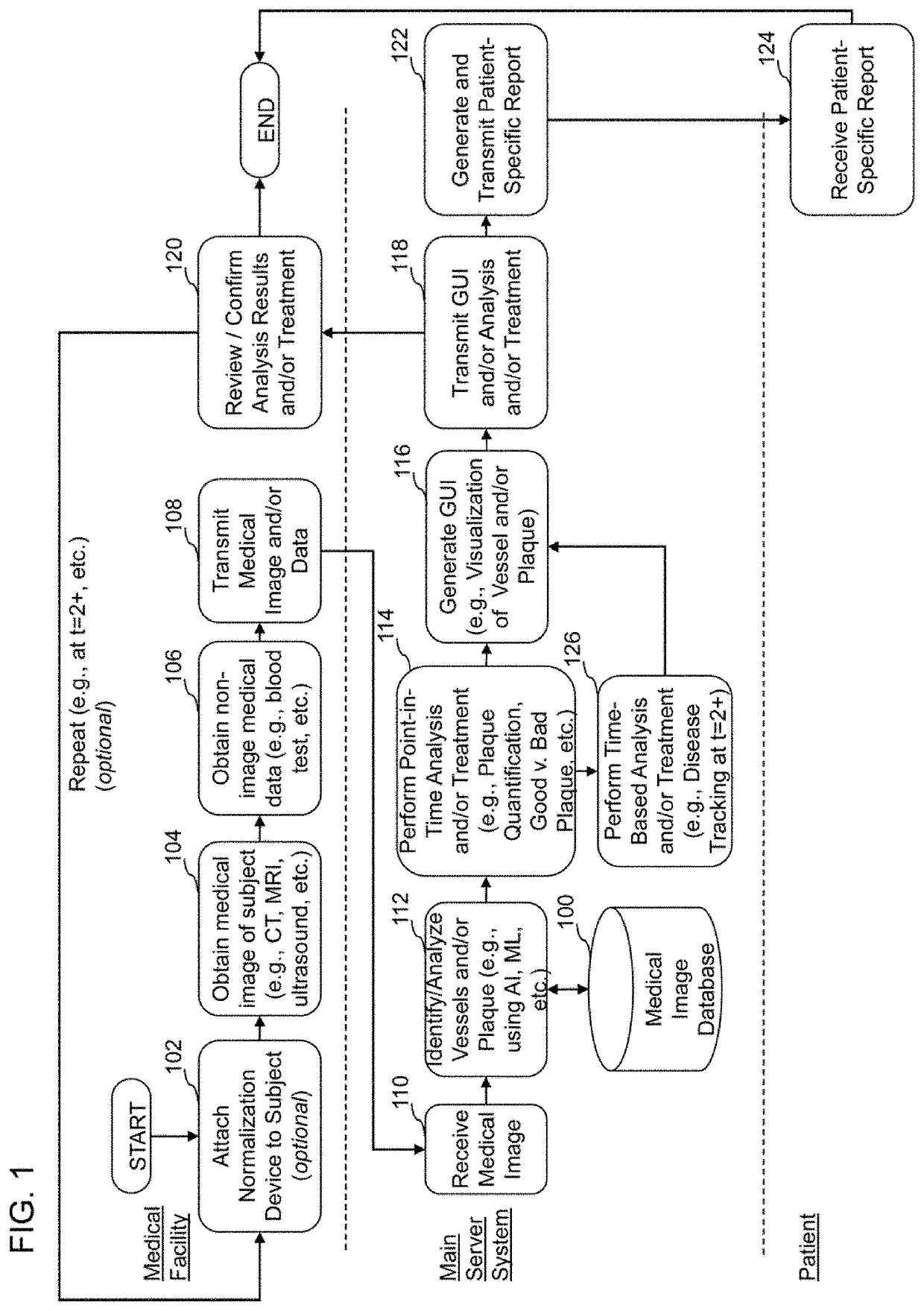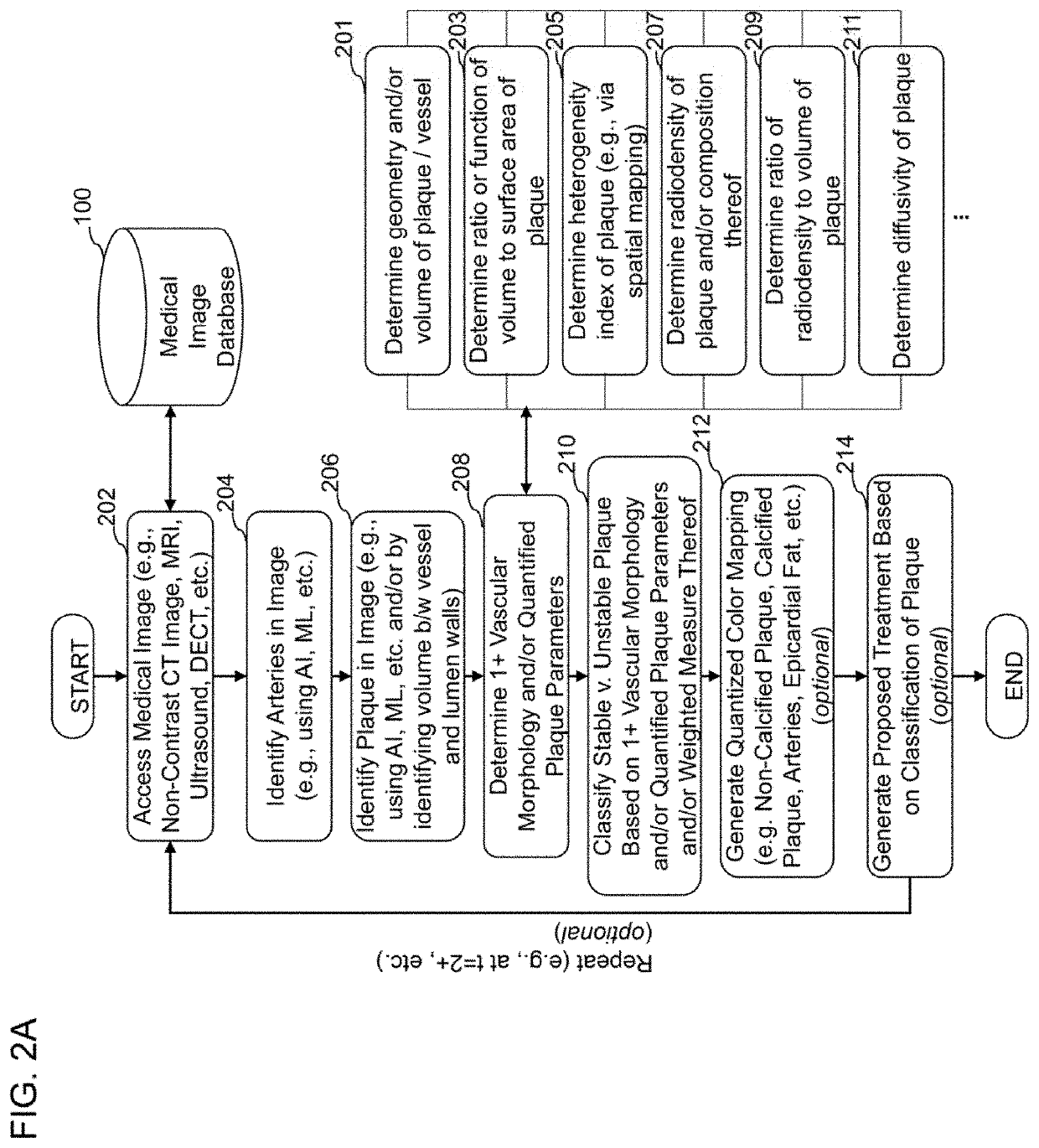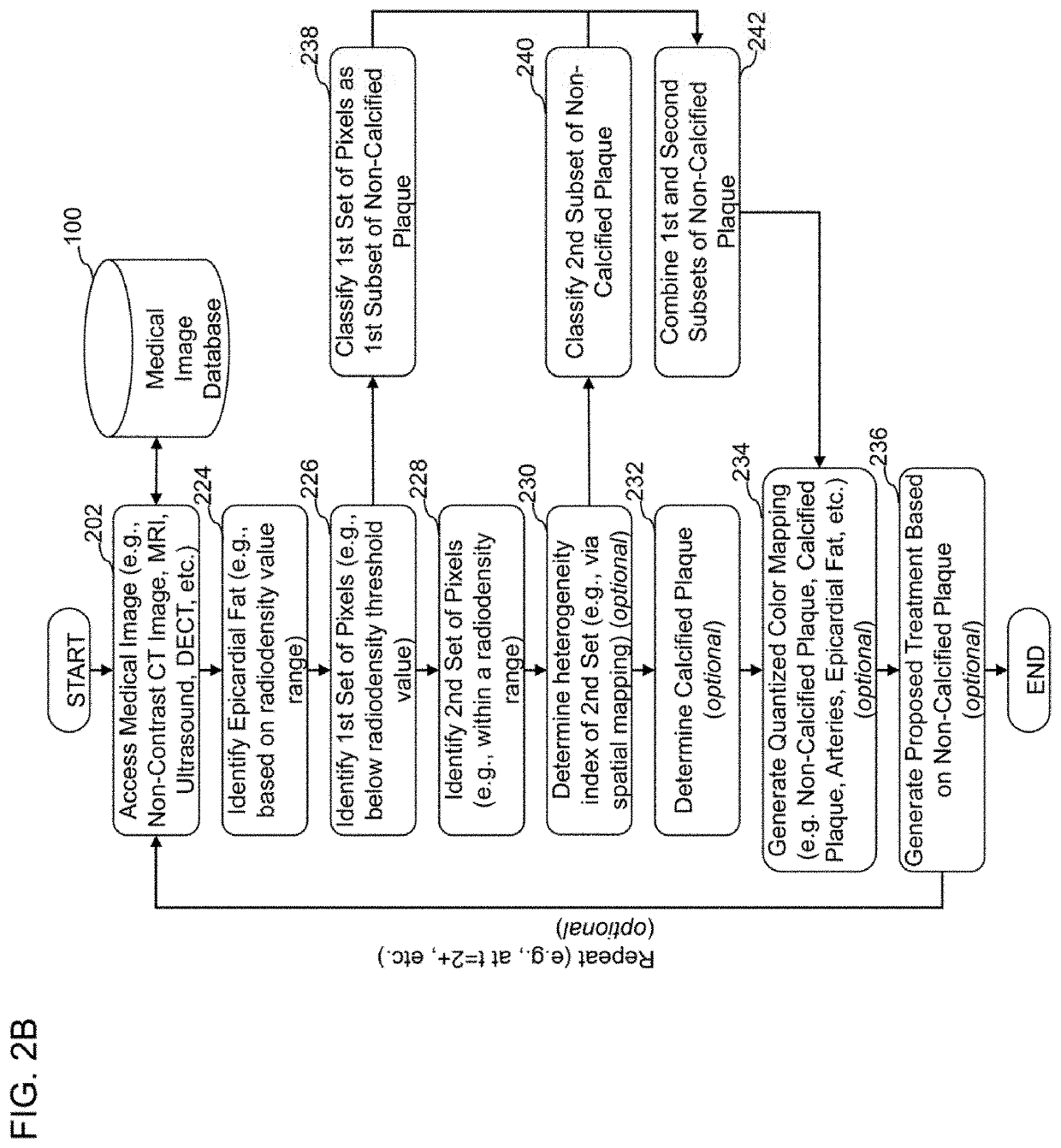Systems, methods, and devices for medical image analysis, diagnosis, risk stratification, decision making and/or disease tracking
a technology of medical image analysis and decision-making, applied in the field of systems, methods and devices for medical image analysis, diagnosis, risk stratification, decision-making and/or disease tracking, can solve the problems of blood clots, most effective treatment, and considered more life-threatening
- Summary
- Abstract
- Description
- Claims
- Application Information
AI Technical Summary
Benefits of technology
Problems solved by technology
Method used
Image
Examples
example embodiments
[0459]The following are non-limiting examples of certain embodiments of systems and methods of characterizing coronary plaque. Other embodiments may include one or more other features, or different features, that are discussed herein.
embodiment 1
[0460]A computer-implemented method of quantifying and classifying coronary plaque within a coronary region of a subject based on non-invasive medical image analysis, the method comprising: accessing, by a computer system, a medical image of a coronary region of a subject, wherein the medical image of the coronary region of the subject is obtained non-invasively; identifying, by the computer system utilizing a coronary artery identification algorithm, one or more coronary arteries within the medical image of the coronary region of the subject, wherein the coronary artery identification algorithm is configured to utilize raw medical images as input; identifying, by the computer system utilizing a plaque identification algorithm, one or more regions of plaque within the one or more coronary arteries identified from the medical image of the coronary region of the subject, wherein the plaque identification algorithm is configured to utilize raw medical images as input; determining, by t...
embodiment 2
[0461]The computer-implemented method of Embodiment 1, wherein one or more of the coronary artery identification algorithm or the plaque identification algorithm comprises an artificial intelligence or machine learning algorithm.
PUM
 Login to View More
Login to View More Abstract
Description
Claims
Application Information
 Login to View More
Login to View More - R&D
- Intellectual Property
- Life Sciences
- Materials
- Tech Scout
- Unparalleled Data Quality
- Higher Quality Content
- 60% Fewer Hallucinations
Browse by: Latest US Patents, China's latest patents, Technical Efficacy Thesaurus, Application Domain, Technology Topic, Popular Technical Reports.
© 2025 PatSnap. All rights reserved.Legal|Privacy policy|Modern Slavery Act Transparency Statement|Sitemap|About US| Contact US: help@patsnap.com



